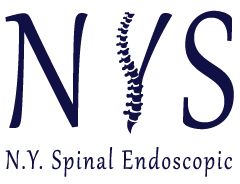Regenerative Medicine Overview
Musculoskeletal injuries (shoulder, hip, knee, etc) are a common cause of pain. Every year, about 100 million new injuries occur, and many progress into chronic pain. Regenerative medicine has been used as a therapy for treating musculoskeletal injuries for decades. Major advancements over the last 20 years have led to significant improvement in techniques and outcomes. Regenerative medicine can be useful for back pain treatment for many of our patients.
WHAT IS REGENERATIVE MEDICINE?
The term “regenerative medicine” refers to a group of therapies aimed at manipulating the body’s own natural ability to heal itself to repair or replace damaged tissue. This is all done in order to avoid having surgery to repair the problem. The basic theory is by injecting a substance at the location of injury and creating inflammation, new cellular growth will help fix the injury. There have been two major improvements that have led to this field of medicine gaining popularity. First, the ability to harness patient-specific injection material (such as in platelet rich plasma injections) provides better treatment options. Second, injections can be done under real-time ultrasound guidance to confirm the material was delivered to the intended target. Prior to this technology, injections were delivered blindly in the general area of injury.
Types Of Regenerative Medicine
- Stem Cell Therapy – Stem cell therapy is the latest regenerative medicine technique to improve musculoskeletal injuries. Stem cells have long been theorized to hold the potential to replicate and thus fix tissue injury. More interesting is the role that stem cells play in the development of cells that can replace worn out tissue like what is seen in osteoarthritis and degenerative disc disease. Stem cells can be harvested from abdominal fat as well as bone marrow, which is found within certain bones. Once obtained and concentrated, these cells can be injected into the location of injury and, with proliferation, can resolve the problem and pain.
- Prolotherapy – Prolotherapy has been in use since the 1930s. This is a process in which an irritating substance is injected at the site of damage to create inflammation and thus scarring to heal torn tendons, ligaments, etc. There are various substances that have been used in the past with reasonable results. The evidence for improvement in ligament and tendon injuries (ACL tears, achilles tears, tennis/golfer elbow, etc) has been confirmed using randomized, controlled human trials. Outcomes include a reduction in pain, and, in some trials, confirmed radiographic (MRI or CT) repair of the damaged structure.
- Platelet Rich Plasma Injections – Originally used in cardiothoracic surgery, platelet rich plasma (PRP) is a very safe and effective way to treat musculoskeletal injuries by using the patient’s own blood products to awaken the healing process. First, blood is collected from the patient. This is then placed in a centrifuge and spun down to separate the different components – the most crucial being platelets. Platelets are the most important mediator of creating a blood clot, but they also play a substantial immunological function. The goal of injecting this large amount of platelets at the site of injury is to produce a robust inflammatory response, which attracts different cells to the area. These cells can help create new tissue and thus fix the injury.
